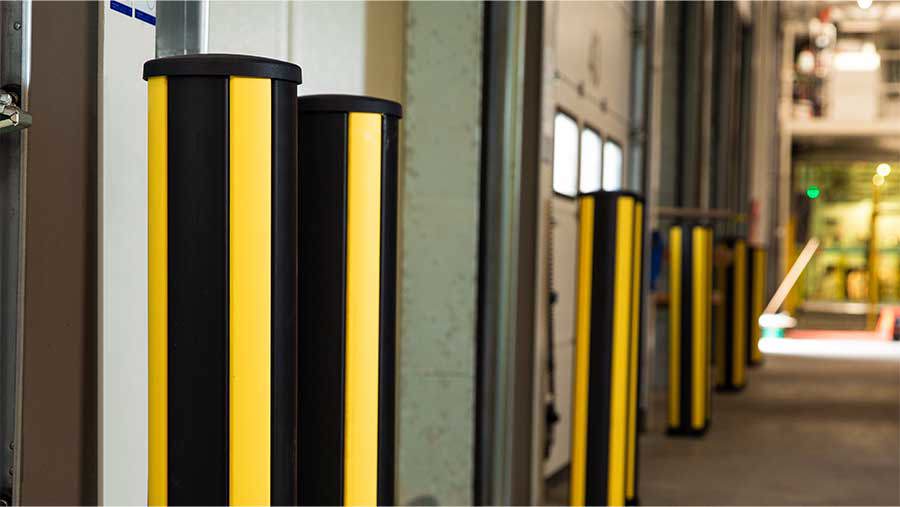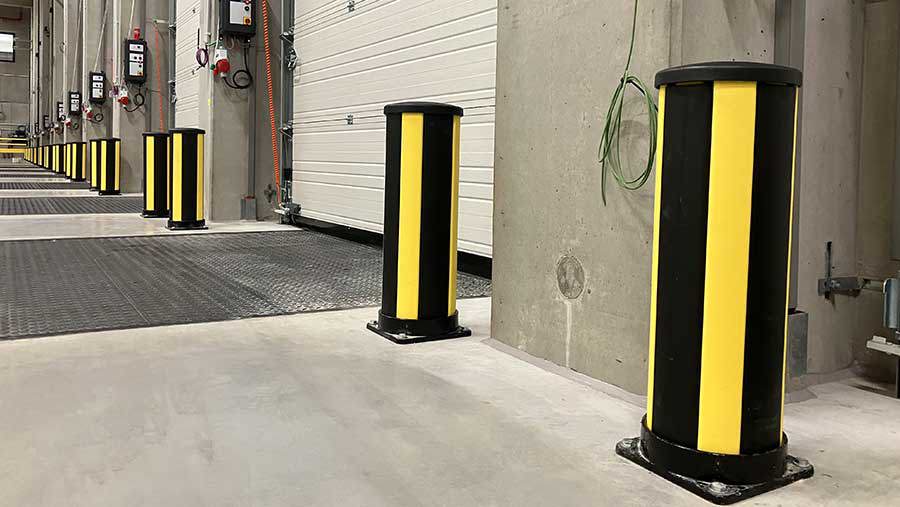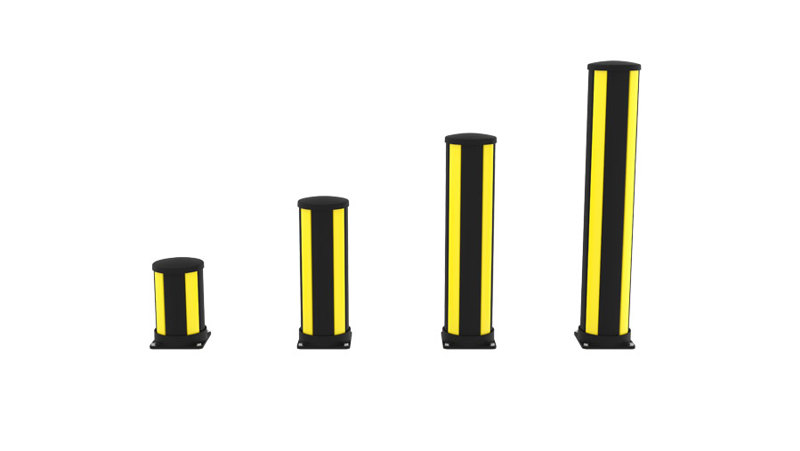Health and safety should be at the top of the priority list for warehouse owners, managers and workers. With heavy machinery and equipment required to complete tasks, the risk of accidents and collisions is ever-present in the warehouse and logistics industry. Whilst it is integral that your staff is trained correctly, incorporating impact protection systems in your warehouse can play a significant role in preventing accidents in the warehouse. When strategically placed, bollards can prevent accidents, protect valuable equipment, and streamline operations. In this blog, we’ll explore the importance of impact bollards and how they can make your workplace a safer environment!
What are Bollards?
Bollards are vertical posts that have the primary function of absorbing and deflecting any impact from vehicles, machinery, and heavy objects. In order for bollards to work effectively, they need to be durable. Vehicles such as forklifts can cause significant damage if involved in a collision. Therefore, you need to have something that can absorb and withstand the impact. In addition to strength, bollards also need to be visible. Warehouse accidents can occur due to collisions caused by poor visibility. Bollards can serve as visual cues, alerting vehicle operators to their presence and preventing accidental collisions.
Where to Place Bollards
A bollard can be installed in a number of different locations in a warehouse. Here are some common areas.
Entrances and Exits
One of the most critical areas for bollard placement is near entrances and exits. These points serve as gateways for vehicles entering and exiting the warehouse. Placing bollards strategically in these areas helps with vehicle traffic, which reduces the risk of collisions near high-traffic zones.
Around Equipment and Machinery
Warehouses can be full of expensive equipment and machinery, therefore it’s critical that they’re protected at all times. In order to have confidence that your equipment and machinery is safe, it’s recommended that you use bollards to create buffer zones that act as a protective barrier against colissions.
Walkways
Pedestrian safety should be of the utmost importance in any warehouse environment. In areas with high foot traffic, such as walkways and crosswalks, bollards should be strategically placed to demonstrate safe pathways. Marking out pedestrian zones means workers know exactly where they can and can’t walk.
Corners & Blind Spots
Corners and blind spots can be extremely dangerous in warehouse settings. Limited visibility in these areas increases the likelihood of collisions and accidents. Placing bollards strategically near corners and blind spots improves visibility for both drivers and pedestrians, reducing the risk of accidents and near-misses.
Want to find out more about warehouse safety? Take a look at our blog ‘A Common Sense Approach to Warehouse Safety’.

The Different Types of Bollards
Now that we have touched on what bollards are and where they can be used, you might be wondering what the different types of bollards are!
Steel Bollards
Steel concreted bollards have been historically favoured in protecting warehouse workers and equipment because of their lower costs, strength, and availability. However, they can cause costly damage when struck to the colliding vehicle and the floor due to the lack of fixability and deflection in steel.
Polymer Impact Bollards
Plastic or polymer Impact tested bollards are also highly effective when it comes to improving warehouse safety because they can absorb any impact and deflect it away from the protected area. This makes them more resistant to multiple impacts, and less likely to cause injury and damage when impacted. If you’re looking for an impact bollard that is tough, easy to install and flexible, look no further than Axelent’s range of X-Protect Impact Bollards.

Fixed Bollards
As the name suggests, this type of bollard is permanently installed into the ground. As a result, you can be confident that these bollards can withstand a considerable amount of force, making it the ideal system to protect sensitive areas such as corners, equipment and machinery. The main downside is that these bollards are rooted in one position, stopping you from being able to move the system into another position.
Lighted Bollards
As we touched on earlier, visibility is key when it comes to impact protection systems. This type of bollard incorporates LED lights, enhancing visibility within the warehouse, especially in dimly lit areas or during night shifts.
Key Considerations for Bollard Placement
- Analyse the Traffic Flow – Before installing bollards, it’s recommended to analyse the warehouse layout and traffic patterns. Identify high-traffic areas, blind spots, intersections, and areas susceptible to congestion or accidents.
- Vulnerability Assessment – It’s also advised that you assess your warehouse and determine the vulnerability of structures and equipment to potential collisions. Important infrastructure, valuable assets, sensitive equipment and areas with high pedestrian activity should be prioritised for bollard protection.
- Employee Training – Educate warehouse staff about the purpose of bollards, safe operating procedures, and the importance of respecting designated pathways and traffic lanes. Promote a culture of safety awareness and encourage employees to report any observed hazards or near-miss incidents promptly.
Implement Bollards in your Warehouse
Strategic bollard placement is an integral aspect of warehouse safety that cannot be overlooked. Installing bollards in high-risk areas means that traffic flow can be managed, critical infrastructure can be protected, and the risk of accidents and injuries can be significantly reduced. Not only that, but investing in bollards demonstrates a commitment to employee safety, which can help you to create a more efficient and productive warehouse environment.




Comments are closed.